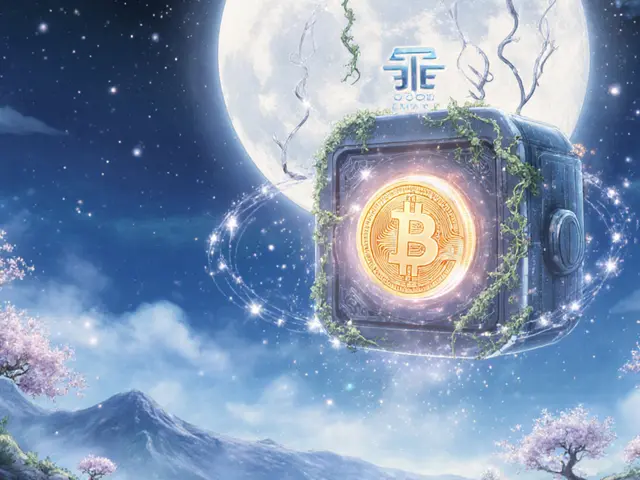Overcollateralization: What It Is and Why It Keeps DeFi Safe
When you borrow crypto without a bank, you don’t get a credit check—you need to lock up more value than you borrow. That’s overcollateralization, the practice of securing a loan with collateral worth more than the borrowed amount. It’s the reason DeFi lending platforms like Aave and Compound can exist without knowing your name or income. If you borrow $1,000 worth of ETH, you might have to lock up $1,500 or even $2,000. The extra 50–100% isn’t a fee—it’s insurance. If the price of ETH drops fast, the system still has room to sell your collateral and pay back the lender without losing money.
This system isn’t just theoretical. It’s what kept users safe during the 2022 crypto crash when prices dropped 60% in weeks. Platforms that required overcollateralization didn’t collapse. Those that didn’t? Gone. DeFi lending protocols, automated systems that match borrowers and lenders using smart contracts rely on this rule like seatbelts in a car. You don’t always need it—but when things go wrong, you’re glad it’s there. Collateral, the crypto assets locked up to secure a loan usually comes from major coins like ETH, BTC, or USDC. Rare tokens? Forget it. Lenders won’t touch them because they’re too volatile or illiquid.
Overcollateralization isn’t perfect. It ties up your crypto, limits your leverage, and feels inefficient if you’re used to traditional loans. But in a world where no one can freeze your account or call you for proof of income, it’s the only thing keeping the system honest. That’s why every major DeFi platform uses it—and why every scammy lending app tries to hide it behind flashy yields.
What you’ll find below are real-world examples of how overcollateralization works in practice: from crypto loans that saved users during market crashes, to tokens that failed because they skipped this rule, to platforms that tried to cut corners and got crushed. These aren’t theory pieces. These are case studies from the trenches of DeFi.
3
What Is Collateralization in DeFi? A Clear Guide to How It Works and Why It Matters
Collateralization in DeFi lets you borrow crypto by locking up other assets as security. Unlike banks, DeFi requires overcollateralization-often 150% or more-to protect against volatile prices. Learn how it works, why liquidations happen, and who uses it.
Latest Posts
Popular Posts
-
 What is Privix New (PRIVIX) Crypto Coin? Facts, Price, and Risks in 2025
What is Privix New (PRIVIX) Crypto Coin? Facts, Price, and Risks in 2025
-
 What is Bitgert (BRISE) crypto coin? Full breakdown of the blockchain, tokenomics, and real-world performance
What is Bitgert (BRISE) crypto coin? Full breakdown of the blockchain, tokenomics, and real-world performance
-
 What Is Collateralization in DeFi? A Clear Guide to How It Works and Why It Matters
What Is Collateralization in DeFi? A Clear Guide to How It Works and Why It Matters
-
 Xena Exchange Crypto Exchange Review: Professional Tools vs. Regulatory Risks
Xena Exchange Crypto Exchange Review: Professional Tools vs. Regulatory Risks
-
 What is LUXO (LUXO) crypto coin? The truth about the luxury authentication token
What is LUXO (LUXO) crypto coin? The truth about the luxury authentication token
Tags
- crypto exchange
- cryptocurrency
- crypto exchange review
- meme cryptocurrency
- blockchain
- cryptocurrency compliance
- Binance Smart Chain
- CoinMarketCap airdrop
- underground crypto Nepal
- crypto airdrop guide
- crypto staking
- Bitcoin mining Iran
- airdrop
- Ethereum staking
- GENIUS Act
- liquid staking
- cryptocurrency exchange security
- crypto
- crypto airdrop
- crypto regulations



